CNC Machining 101: CNC Machining Definition. An Overview of CNC Machining
What does CNC machining mean? or What does CNC machining stand for? It's the same question about the CNC machining definition. If you are a new entrant in the industry, or a student, a buyer, have some knowledge of machining, but the knowledge are not complete, this guide can help you to understand the machining process and machining knowledge within 10 minutes. If you are engaged in the machining industry for many years, you should be familiar with the following content. But it can also help you better refresh the memory and know more details.
The article is mainly included below topics,
1. Terminology of machining process
2. CNC machining definition and Machining methods
3. Introduction to Cnc machining equipment
4. CASE STUDY: Specific Cnc Machining Process case
5. Measuring tools in Cnc machining
6. Surface roughness, Geometric dimensioning and tolerancing (GD&T) in CNC machining
Knowledge 1: Terminology of machining processes
1. Mechanical processing (machining process) refers to the process of changing the shape, size, relative position, and performance of parts to make them into finished or semi-finished products. It usually includes processing techniques for removing materials: turning, milling, boring, drilling, grinding, and other processing.
2. Terminology in machining
Let's take a look at the terms often used in the machining industry
|
ITEM |
terminology |
Detail |
|
1 |
Processing |
The process through which a worker completes a part (or a group of parts). |
|
2 |
Work steps |
Under the condition of processing surface, tool, feed and rotation speed, the process is completed continuously |
|
3 |
Installation |
The process of the workpiece in one clamping. |
|
4 |
Crafting process |
directly change the shape, size and performance of the raw materials to make it into a finished product. Can be divided into: casting, pressure processing, welding, mechanical processing, heat treatment, special processing, electroplating, coating, assembly and other processes. |
|
5 |
Production process |
The whole process of making various parts from raw materials and assembling them into machines. |
|
6 |
Fixture |
In order to complete a certain process, the device used to install the workpiece correctly and quickly. |
|
7 |
Machine made |
A general term for manufacturing methods and processes of various machines. |
|
8 |
Process documents |
Instruct workers to operate and use various technical documents for production and process management. |
|
9 |
Process specification |
Process documents specifying the manufacturing process and operation methods of products or parts. |
|
10 |
Process parameters |
In order to achieve the expected technical indicators, the relevant quantities needed to be selected or controlled in the process. |
|
11 |
Process equipment (Tooling) |
Generic term for various tools used in product manufacturing process. Including: knives, fixtures, molds, measuring tools, inspection tools, tools, fitter tools and station tools, etc. |
|
12 |
Cutting |
A processing method that uses a cutting tool to remove excess material from a workpiece. |
|
13 |
Process size |
According to the processing requirements, the dimensions given in the process drawings or process specifications. |
|
14 |
Process card |
A process document prepared according to a process stage of a product or part. It takes the process as the unit and details the process number, process name, process content, process parameters, operating requirements, equipment and process equipment used at this stage. |
|
15 |
Process drawings |
Attached to the process specification is a diagram or chart to illustrate the processing or installation of products or parts. |
|
16 |
Inspection process card |
According to the importance of part size, shape and position tolerance, surface roughness and nature in the process, a process document is prepared. It stipulates the inspection percentage and the quantity used, inspection tools and conformity marks. |
|
17 |
Fixture |
The process of positioning and clamping the workpiece on the machine tool or in the fixture. |
|
18 |
Roughing |
Cutting more margin from the blank, the accuracy that can be achieved is relatively low, and the machining surface roughness value is relatively large. |
|
19 |
Finishing |
Cut less margin from the workpiece, the accuracy is higher, and the surface roughness value is smaller. |
|
20 |
Semi-finishing |
The process between roughing and finishing. |
|
21 |
Process margin |
The difference between the dimensions of two adjacent processes. |
|
22 |
CNC machining |
Control the machine by CNC to achieve mechanical processing |
Knowledge 2: CNC Machining Definition and Machining methods
What does cnc machining mean? CNC machining definition is a subtractive mechanical manufacturing process which use CNC and machine tools to remove material and produces a customized part. CNC means Computer Numerical Control. CNC machining methods included turning, milling, drilling, boring, planing, broaching, grinding, reaming, wire cutting.
1. Turning
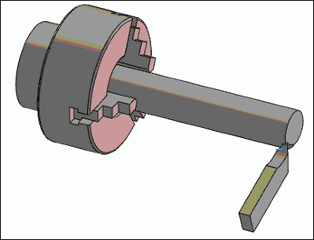
What is turning? Turning is a machining process, The cutting method of workpiece rotation for main motion and turning tool for feed motion. The main motion of turning is the rotary motion of the part, and the linear motion of the tool is the feed motion, which is especially suitable for machining the rotary surface.
The main purpose of turning is to process the rotary body. Can be processed on a lathe: outer circle, end face, taper, lathe forming surface, winding spring, etc.
Turning can include: turning the outer circle, turning the end face, turning the cone, cutting the groove, cutting the inner groove, drilling the center hole, drilling, boring, reaming, turning the surface, turning the outer thread, knurling
2. Milling
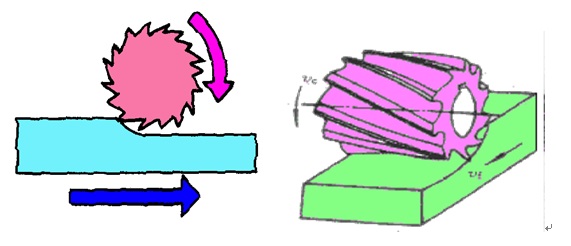
Milling is a machining process, that the main motion is the rotation of the milling cutter, and the cutting processing method of the workpiece or the milling cutter; when milling, the rotation of the part with the milling cutter of the work table is the main movement. Machine tools for milling include horizontal milling machines or vertical milling machines, as well as large gantry milling machines. These machine tools can be ordinary machine tools or CNC machine tools. A CNC milling machine with a tool magazine is usually called a machining center or a milling machining center. The milling accuracy is generally IT8 ~ IT7, and the surface roughness Ra value is 1.6 ~ 3.2 Micron.
3. Drilling
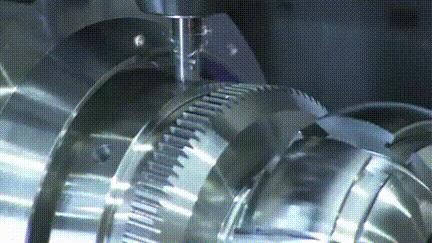
Drill is a machining method in which a drilling tool moves relative to a workpiece and performs an axial feed motion to process a hole in the workpiece.
Application: In single piece and small batch production, small holes (D <13 mm) on small and medium-sized workpieces are usually processed by bench drilling machines, and larger holes (D <50 mm) are usually processed by vertical drilling machines; holes on large and medium-sized workpieces Radial drilling machine should be used for processing, and the holes on the rotating body workpieces are processed on the lathe.
In batches and mass production, in order to ensure processing accuracy, increase production efficiency and reduce processing costs, drilling dies, multi-axis drilling or combination machine tools are widely used for hole processing.
Small and medium diameter holes (D <50mm) with high precision and small roughness, after drilling, it is often necessary to use expansion and reaming for semi-finishing and finishing。
4. Boring
Boring is the cutting processing method in which the boring cutter rotates as the main motion and the workpiece or the boring cutter performs the feed motion. Boring processing is mainly carried out on milling and boring machines and boring machines. Boring is the further processing of forged, cast or drilled holes. Boring holes can be divided into rough boring, semi-fine boring and fine boring.
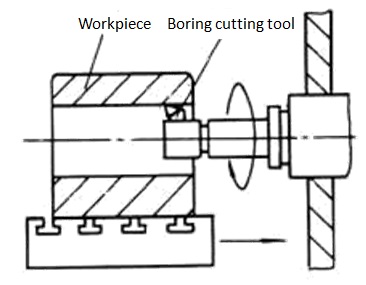
Boring is divided into general boring and deep hole boring. Generally, boring can be done on an ordinary lathe, and the boring tool can be fixed on the lathe tailstock or fixed on the small tool holder. Deep hole boring requires a special deep hole drill
For the boring machine, the boring cutter should be added with boring stalks, and the hydraulic pump station should be added to use the cooling liquid to remove iron filings. The method of boring on the milling and boring machine is shown in the figure below. The single-edge boring tool is to install the boring head on the boring tool
On the rod, the size of its aperture is guaranteed by adjusting the overhang length of the cutter head, which is mostly used in single-piece small batch production. Boring in ordinary milling and boring machines is basically similar to turning holes.
5. Planing
A cutting method in which the planing knife and the workpiece make a relatively linear reciprocating movement in the horizontal direction. Planing is one of the main methods of planar machining. It is the most commonly used machining method for planar machining of single-piece small batch production. Common planing machine tools include ox head planer, gantry planer and slotting machine.
Planing include Planing horizontal plane, planing vertical plane, planing inclined plane, planing right angle, planing V-shaped slot, planing right-angled slot, planing T-shaped slot, planing dovetail slot, planing forming surface, planed rack
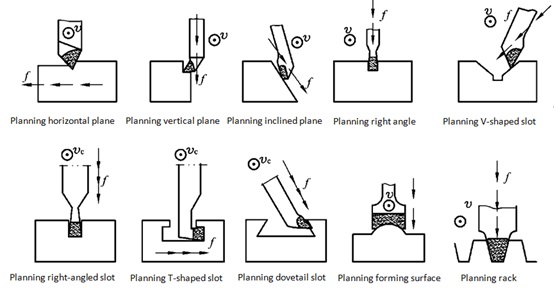
6. Broaching
A method of processing the inner and outer surfaces of the workpiece by using a broach to move axially under the pulling force. Using a multi-tooth broach, a thin metal layer is cut from the workpiece one by one in order to achieve a higher precision and a smaller roughness value on the surface.
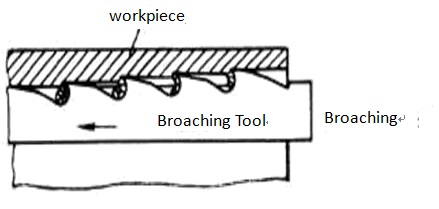
Use broaches as a cutting tool. When the broach moves linearly with respect to the workpiece, the machining allowance of the workpiece is sequentially cut off by the teeth of the broach increasing in size one by one. Usually, one working trip is
It can be processed and formed, which is a highly efficient finishing method. However, broaching is mainly used for mass production because of its complicated structure, high manufacturing cost, and certain specificity. According to processing
Different surface features, broaching is divided into internal broaching and external broaching.
Process characteristics of cutting:
(1)High production efficiency
(2)High processing accuracy and small outer surface roughness: the general precision of hole drawing is IT8 ~ IT7, and the surface roughness Ra value is 0.4 ~ 0.8 mm.
7. Grinding
Grinding is a method in which the abrasive tool rotates at a high linear speed to process the surface of the workpiece. Grinding machines include cylindrical grinding, internal grinding and centerless grinding.
Grinding process characteristics:
(1) The grinding precision is high, IT6-IT5, the roughness is low, Ra0.8-0.2, there are many cutting edges on the surface of the grinding wheel to participate in cutting at the same time.
(2) Some difficult materials can be processed. Such as the cleaning of hardened steel, high-speed steel and blanks.
(3) High cutting speed (above 30m / s) and high cutting temperature (above 1000 ℃). Use coolant.
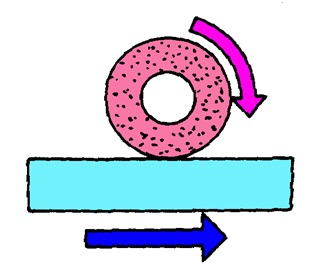
8. Wire cutting
Definition: Wire cutting generally refers to EDM wire cutting machine, which belongs to the field of electric machining. The instantaneous high temperature of the electric spark can melt and oxidize the local metal and be corroded, thereby forming a processing method.
According to the wire walking speed, wire EDM can be divided into high-speed reciprocating wire EDM wire cutting machine commonly known as "fast wire", low-speed unidirectional wire EDM wire cutting machine commonly known as "slow wire" and vertical self-rotating EDM Three types of wire cutting machine.
9. No cutting
Extrusion, cold heading, thread rolling and other processes are used to produce bolts, nuts and mechanical accessories, which greatly improves the material utilization rate and sometimes does not require cutting at all;
The aluminum alloy parts are manufactured by metal die pressure casting. Compared with ordinary casting, the quality of the manufactured parts is improved, and basically no cutting processing is required;
Powder metallurgy can be used to manufacture high-strength and high-density mechanical parts, such as precision gears.
The compression and injection molded parts of engineering plastics have high strength and easy forming, and there is basically no processing allowance. Other traditional casting and forging processes can also improve accuracy, reduce machining allowances, and achieve roughening of blanks. The application of welded structure has changed the traditional structure of integral casting and integral forging in the past, which greatly reduces the weight of components.
Compared with the traditional process, less cutting has significant technical and economic benefits. It can realize the comprehensive crossing of a variety of cold and hot processes, and a variety of materials. The combination of materials and processes is an important part of mechanical manufacturing technology breakthrough.
Knowledge 3. Introduction to machining equipment
1. Lathes and CNC lathes, Swiss lathes
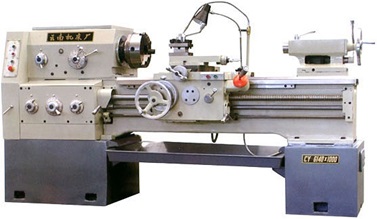
2. Milling machine and machining center
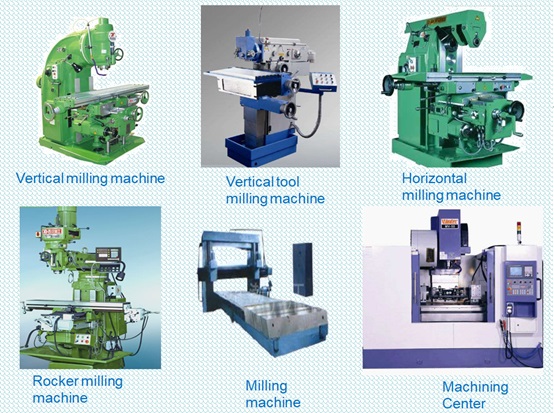
3. Grinding Machine
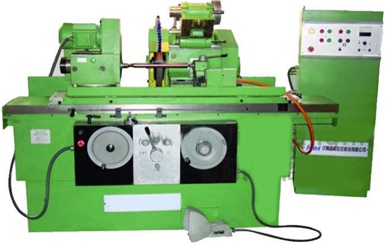
4. Drilling Machine
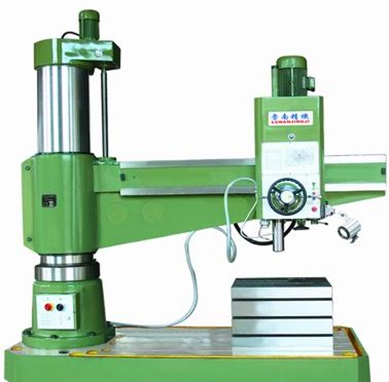
5. Boring Machine
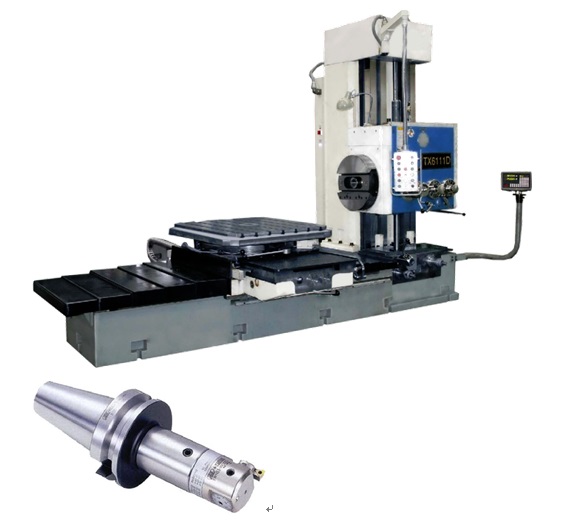
6. Broaching Machine
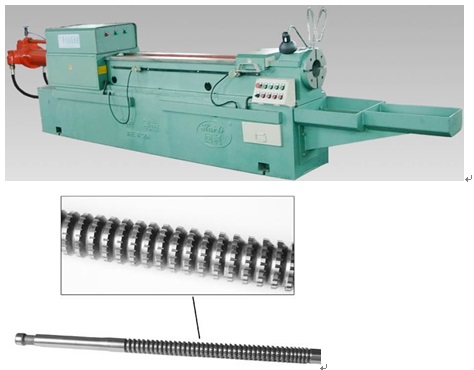
7. Gear shaping machine, gear rubbing machine
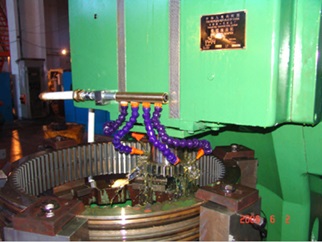
8. Wire Cutting Machine
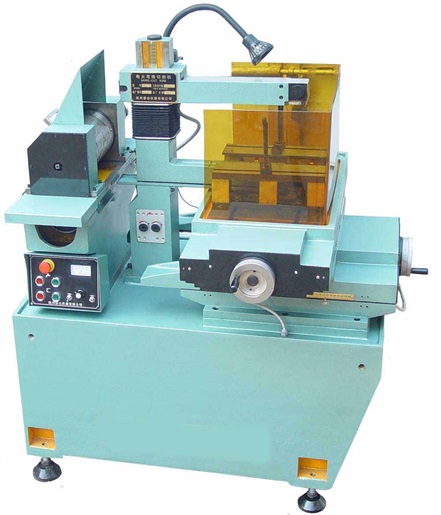
9. Electric spark
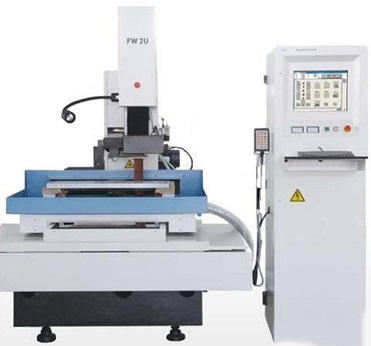
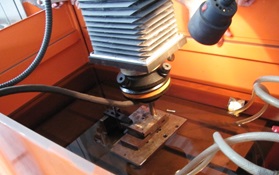
Knowledge 4: Specific Machining Process case
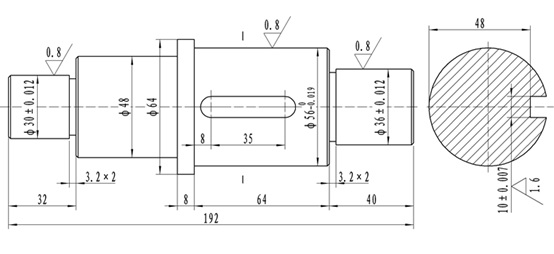
|
ITEM |
Processing content |
Equipment |
|
1 |
①Turning end face; ② Making the center hole; ③ Turning another section ④ Make the center hole. |
Turning Machine |
|
2 |
①Turning OD Φ64 ②Turning OD Φ56 ③Turning OD Φ36 ④Slotting ⑤Chamfering ⑥Turning OD Φ48 ⑦Turning OD Φ30 ⑧Slotting ⑨chamfering |
Turning Machine |
|
3 |
Keyway milling |
CNC Machine Center |
|
4 |
Deburring |
|
|
5 |
①Grinding Φ56 ②Grinding Φ36 ③Grinding Φ30 |
Grinding machine |
Knowledge 5. Measuring tools in machining
At the end of the mechanical processing process or product processing, we need to measure the corresponding size with a measuring tool to ensure that the product meets the requirements of the drawings. Commonly used quantities are: vernier caliper, depth vernier caliper, vernier universal angle ruler, outer (inner) diameter micrometer, thread micrometer, dial indicator, dial indicator, etc.
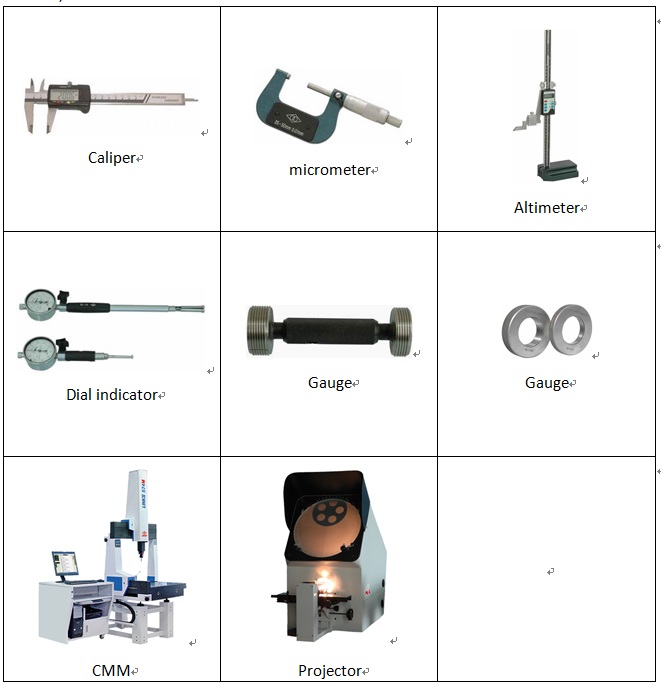
Knowledge 6. Surface roughness, shape and position tolerance in CNC machining
1. The surface roughness reflects the micro-geometric error on the processed surface of the part.The following describes the different processing methods can bring different surface roughness
|
Surface microscopic characteristics |
Roughness, Ra |
Machining Process |
Application examples |
|
|
Rough |
Visible processing marks |
>10
|
Rough turning, rough milling, rasping, sawing |
Chamfering, drilling, keyway bottom |
|
Semi-gloss surface |
Slight processing marks |
5--10 |
Turning, milling, drilling, boring, rough reaming |
Ordinary mating surface |
|
Slight processing marks |
2.5-5 |
Turning, milling, boring, pulling, grinding |
Surfaces not required for assembly |
|
|
Can't see the processing trace clearly |
1.25-2.5 |
Turning, milling, boring, broaching, grinding |
Gear working surface, box boring surface |
|
|
Smooth surface |
Recognize the direction of processing marks |
0.63-1.25 |
Turning, boring, milling, grinding, fine Reaming |
Cylindrical pin, rail surface |
|
Slight Direction of processing marks |
0.32-0.63 |
Fine Reaming, fine boring, grinding |
High-precision guide surface, important matching surface |
|
|
Unrecognizable direction of processing traces |
0.16-0.32 |
Precision grinding, grinding, super finishing |
Precision machine tool spindle |
|
|
Very Smooth surface |
Dark, shiny surface |
<0.16 |
Fine grinding, grinding, polishing |
Gauges, cylinders, etc. |
2. Geometric dimensioning and tolerancing (GD&T) includes:
Straightness, Flatness, Circularity, Cylindricity, Profile of a Line, Profile of a Surface, Parallelism, Perpendicularity, Angularity, Position, Concentricity, Co-axiality, Symmetry, Run out
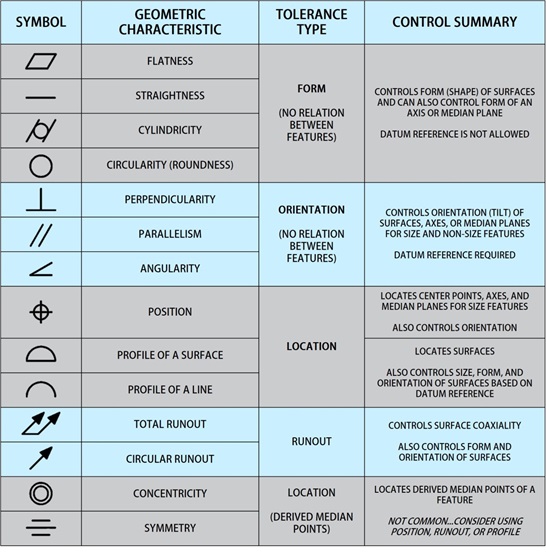
Summary
The article is mainly introduce minology of machining process, CNC machining definition and Cnc Machining methods, Cnc machining equipment, Cnc Machining Process case study, Measuring tools in Cnc machining, and Surface roughness, Geometric dimensioning and tolerancing (GD&T) in CNC machining.


